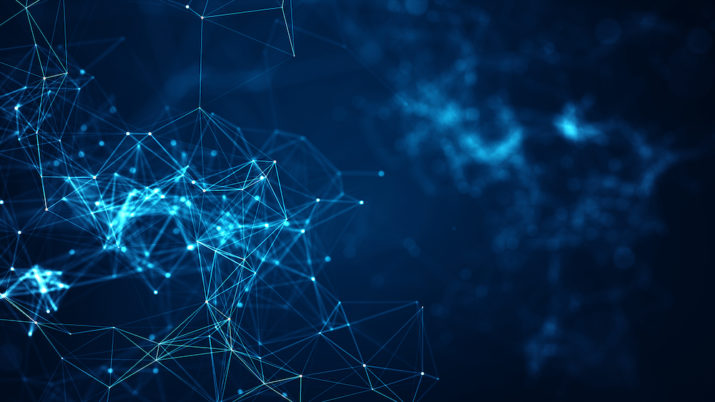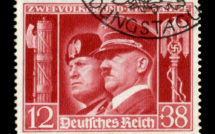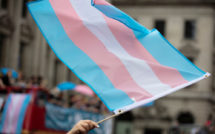
Exploring the Challenges of the “Digital Revolution” in a New Minor in Textual Studies and Digital Humanities at the University of Washington

An introduction to our campus spotlight on the University of Washington.
It is no great insight to say that students today are increasingly reliant on the internet to do their reading and research for papers and projects. I measured the full scale of this trend in a 2019 class I taught on early modern French culture. I counted all the bibliographic entries in thirty-seven final papers in which students analyzed one to two primary texts using at least two secondary sources. There were 182 entries in total, and while a number of them were ambiguous about whether the student had accessed the source online or in print, I am fairly confident that no fewer than 150 of those 182 represented entirely electronic consultations, and I strongly suspect the figure was higher. Moreover, of the dozen total entries that were unambiguously to a printed item, the majority were to two books I had asked students to purchase. Beyond this, the number of printed items that the students as a whole had found for themselves and accessed in printed form in the process of their research could be counted on one hand. What perhaps most jumped out was the complete absence of print sources from most of the bibliographies, which contained no print items at all.
It is worth reflecting on the reality evoked by these bibliographies, which is that undergraduates do not simply do a lot of their work online, they do all of it online, from hunting for ideas, searching for sources, accessing and reading those sources, to then citing the materials in papers that are, for their part, written and submitted electronically (not to mention read, commented on, and returned electronically by instructors). It is a recognizable reality, but it is one that, in its all-encompassing digital nature, I do not know that we have adequately taken stock of in the humanities.
What we expect of our students—of the work they can do with texts and with research materials—has not shifted to the degree that their reading and research habits have. Our expectations continue to be largely those we have inherited from a pedagogical time in which students worked primarily with paper, with sources that are identifiable and localizable in the ways printed materials are: carrying imprints establishing clear bibliographical data, such as date, author, and publisher; citable with page numbers; and pointing to other sources in standardized ways, in footnotes and bibliographies offering navigable pathways through recognized networks of scholarly debate. These materials are also, in the context of a student’s coursework, relatively scarce, limited by what can be bought at a bookstore, checked out from a library, and carried in a backpack. Our assignments reflect this dearth, prioritizing—as mine did above—close reading of a few privileged items.
I am reminded of Elizabeth Eisenstein’s characterization in her classic study, The Printing Press as Agent of Change (1980), of the early spread of printing technologies in fifteenth- and sixteenth-century Europe as an “unacknowledged revolution.”[1] This struck many as an odd thing to say about a historical shift that in fact always seemed widely acknowledged. In 1792, French Revolutionary Anacharsis Cloots proposed to the National Assembly that Gutenberg’s remains be transferred to the Panthéon, the Parisian monument dedicated to glorifying the intellectual architects of new era of rights, liberty, and equality, like Voltaire, whose remains had been moved into the repurposed Temple in an elaborate ceremony in 1791, and Rousseau. For without Gutenberg, Cloots told the Assembly, “we would have had neither Voltaire, nor Rousseau, nor a Panthéon.”[2] Eisenstein herself prominently cited Francis Bacon’s comment from his 1620 Novum Organum that “printing, gunpowder and the compass […] have changed the appearance and state of the whole world.”[3] Her point, however, was that the truly revolutionary effects of printing are missed in perspectives like Cloots’, which emphasize the content of texts that the new technology put into circulation. Yet, print’s deeper and primordial impact lay in how it remediated the existing repositories of religious, classical, pedagogical, legal and bureaucratic writings of the late Middle Ages: not bold new treatises on rights and equality, but Bibles, devotional books, Latin grammars, Scholastic commentaries, textbooks, and indulgences—the latter being one of the first types of text to come off Gutenberg’s press. As they migrated from script into the new medium of print, these long-familiar and quite unrevolutionary texts were transformed in revolutionary ways insofar as they acquired new “features” imparted onto them through the process of typographic reproduction. It was these features, Eisenstein argued, that led readers to think in new ways, even as they ostensibly perused the same “old” works.
When printed, texts were no longer bespoke manuscripts. They were (more or less) identical copies in an edition, from which they drew their identity. This reshaped the individual reader’s connection to a community of readers, perceived now as larger and more dispersed—an international network or a nation—all presumed to be looking at the exact same text. A sense of the text’s fixity took root, as well as a belief in the transparency of the printed book as a medium, trusted as a more reliable point of access to the stabilized text. In title pages—themselves innovations of the new technological process—printed texts extolled the works they offered to readers as “corrected,” “improved,” and “authorized.” The erratic and idiosyncratic nature of the text in the world of manuscript copying was brought under a new type of control by a textual culture built on typography. “Print culture” was upheld by new editorial and publishing conventions and by an emerging commercial and legal framework that affirmed and enforced a set of principles upon which texts would be systematized and made trustworthy, including those of authorship and copyright. Not to mention by new bureaucracies of religious and political censorship.
We are presently living through another massive remediation experience, one that seems every bit as far-reaching and consequential as the introduction of print technologies in fifteenth-century Europe. Now it is the historical archive of printed texts—along with other types of “analog” texts, such as manuscripts, papyrus fragments, clay tablets—that is migrating into digital formats to become available in new modalities, in digital repositories and databases accessible via search engines and webpages to anyone anywhere with an internet connection. Once again, old familiar texts are acquiring radically new features. They are accessible in unprecedented ways. We can read from a digitized copy of the original 1759 edition of Voltaire’s satirical novel Candide as easily as we can read from a modern edition of the work bought in a bookstore.[4] They are searchable at a new scale. Card catalogues, indexes, tables of content, concordances, and other navigational tools certainly helped students find content from within a library of printed books. But that hardly compares to the ability they have today to search for that same content through all 40 million volumes scanned by Google Books in seconds with a few keystrokes. And these old texts are now processable in ways that were not in print, at least not easily. Using simple and not-so-simple techniques from word counts to python scripts, students can enumerate words, sentences, characters, in single works or in massive databases, undertaking quantitative analyses of vocabulary, style, and topic.
At the same time, the features and principles that made printed texts so stable, findable, and legible are, in many ways, ill-suited to the digital medium. Copyright, for instance, has particular effects on how students can work online, distinct from how it regulates what they can locate and use in print, where copyright tends to ensure that a text is what it claims to be. In the world of print, copyright is seamless; we never have to think about it. But online, copyright presents tangible barriers that hinder reading and research. The search through Google Books will make fully available for reading only editions that are in the public domain, which in the US today consists mostly of all works published before 1927, whose copyright terms have expired. Anything more recent will most likely be available only in frustrating snippets, if indeed any of the text is accessible at all. And if a pre-1927 work happens to be what the student is looking for, how then to choose from the bewildering array of early public-domain editions that will inevitably scroll down the page, often with scant, hard-to-decipher, or simply incorrect bibliographic information and outdated editorial apparatus?[5] And how to cite the text one eventually chooses? Citation protocols have endeavored to adjust to the brave new digital world, but this has been imperfect, to say the least. A lack of technical awareness of a digital text’s underlying format can generate problems for students. Is the student consulting a digitized image of a printed text, delivered as a PDF file? Or an HTML-encoded webpage? According to the guidelines of the Modern Language Association, each requires a distinct protocol for citing, even if the underlying text is taken from the exact same edition.[6] Print, and print-based pedagogy, never asked ask for this type of technical awareness.
To give students the opportunity to explore these types of questions, which are both essential and fascinating, as well as to develop what we think are critical skills for working with texts in digital and non-digital contexts, the Textual Studies Program at the University of Washington has designed a new interdisciplinary minor in Textual Studies and Digital Humanities. Textual Studies encompasses a broad set of fields, methods, and techniques for investigating the nature, meanings, and uses of texts across space and time. It explores how texts are created, edited, published, read, and adapted, as well as the material forms they assume—as manuscripts, books, pamphlets, clay tablets, as well as websites and e-books—and how these diverse materialities impact the ways texts convey their meanings and are understood. It examines the ways in which texts move across history and geography, and across languages and platforms, along with the legal, commercial, social, linguistic, cultural, and political factors that shape them. Textual scholars are interested in the history of writing and reading practices; in the history of the book; in media studies; in the history of copyright and of patterns and regulation of text reuse; and in the history of libraries, archives, collections, and cataloguing, to name just some of the areas and themes explored. Of particular interest are the impacts of technological change. This has traditionally led textual scholars to focus on how printing processes shaped works, especially in the effort of establishing a definitive version of a text for an edition. Today, of course, the importance of technology is especially manifest in the massive digitization underway of textual archives and in the related transformations of our reading, writing and scholarly activities. Currently, undergraduates at the University of Washington (UW) have no place to explore systematically the complex issues raised by these developments. The minor will encourage them to explore the impacts of this shift on institutions such as universities and libraries; its implications for access and inclusivity and for which texts and archives get digitized and which do not; and its impacts on how materials are discovered, recorded, published and preserved, and how they encoded and indexed for search, processing, and digital display and publication.
Moreover, the minor in Textual Studies and Digital Humanities not only offers students a framework in which to explore these issues philosophically and historically. It also provides them with opportunities to learn and develop some of the skills necessary for working with both digital and non-digital materials. Textual Studies has always been oriented towards hands-on, project-focused, skills-based applications for working with rare books and manuscript, navigating archives, handling documents, and preparing editions, exhibits, and collections. The new minor will thus present a dual-track, offering the chance both to work with primary sources and historical objects located in archives, rare book libraries, and special collections, and to develop skills and learn tools and techniques for digitizing those materials and working with them as digitized artifacts, such as electronic editions and databases.
Textual Studies and Digital Humanities minor coursework
In practice, the minor is built on a sequence of core courses, of which students are required to take at least two. These include “Text Technologies,” in which students explore topics raised by the history of texts from antiquity to the present in a global framework. This course might, for example, focus on Cultures of Reading in the Middle Ages or Near Eastern Histories of Texts in which the impacts of technologies within cultures of non-Latin and non-alphabetic writing are emphasized. A second course, “Book Arts,” foregrounds the materiality of texts. This course takes students into UW Special Collections and other physical archives, whenever possible, to study approaches to the material text: from investigating artists books to learning descriptive bibliography and the material analysis of early print books to studying medieval manuscripts.
“Archives, Data and Databases” focuses on archival documents, histories of collections and cataloguing, and perhaps most pressingly today, texts in the form of data. In iterations of this course, students might learn to build a database of textual materials and/or to work with databases at scale with an introduction to computational methods. “Texts, Publics, and Publication” offers a digitally-oriented course in critical editing, including editorial theory and training in techniques for creating a digital edition or exhibit, using a variety of platforms and technologies, from TEI-XML and XML-based processing tools to using digital exhibition platforms like Omeka. Two newer courses will soon be added to this list, designed with a technical focus to articulate with a new Data Science minor created at the UW. “Texts, Data and Computation” provides students the chance to do more in‑depth work with computational techniques for working with large textual databases, for instance by learning python and relevant python libraries. “Digital Editing and Text Processing for Publication” offers training in developing a digital edition as a web application, using XML-based tools like XPath, XSLT and XQuery and learning a few fundamentals of web design.
In addition to these courses, students will select two courses from a list of electives, some of which we are creating within the minor itself but designed for a larger public of students at a lower level, such as “Histories and Futures of the Book, Texts, and Reading” and “Introduction to Data Science in the Humanities.” Others will be drawn from approved offerings across campus. Taught in a broad range of departments and schools from history, French, American Ethnic Studies, Near Eastern Studies, Asian Languages and Literatures to the Information School and other units, these include courses such as “World Wars I and II. Digital Histories,” “Human and Machine Translation,” “Black Digital Studies,” “Digital Media: Middle East and Central Asia,” and “Print Culture in South Asia.”
Alongside the near total digital migration of the reading and research we do in classes, the humanities are also being reshaped by another revolution, this one far more acknowledged as a “crisis” manifest in dramatically declining in enrollments. It is important to note, though, that the drop in numbers has generally been markedly larger when we focus on academic credentials—that is, at the number of students who declare majors and minors in the humanities—than when we look at enrollments in humanities courses. This suggests that the problem lies more acutely in the pathways we present to students than in what we tend to focus on, which is a more forbidding sense of general collapse of interest in the humanities in favor of STEM fields. But STEM’s advantage is not that it is inherently more interesting or relevant to students. Rather, as framed by parents, career counselors, advisors, administrators and marketing specialists, STEM offers more compelling pathways in the form of majors and minors that promise better outcomes in a context of rising tuition and uncertain job prospects.
Our challenge in the humanities is to better articulate connections between the work we have traditionally asked students to do—reading complex texts; historicizing and interpreting them, and formulating persuasive arguments—with a set of transferrable skills that will help students link their work in humanistic programs with viable and meaningful outcomes in the present context. Our wager is that a minor in Textual Studies and Digital Humanities, with its applied skills-based focus and emphasis on projects and portfolios, will be especially appealing to students eying employment and graduate studies in editing and publishing, libraries and archives, curatorial work, and in careers where working with cultural, historical and literary texts in digital environments is paramount.
In 1514, Erasmus of Rotterdam arrived in Basel, Switzerland, to work on a series of editions with the printer Johann Froben, in whose house and workshop he lived until 1516. The story of the collaboration between scholar and printer offers a contrast with well-known contemporary images of the Dutch humanist, such as Dürer’s engraving from the 1520s, which show Erasmus in the classic pose of a scholar, writing alone in a study amongst his books.[7] Yet so much of Erasmus’ work—composing and shaping his texts; translation and commenting on the texts of others—was undertaken in the bustling din of the print-shop, where he worked from proofs as they were pulled off the presses and made edits into standing type. The humanities were revitalized in this cross‑pollination of scholarly and typographic labor. Five hundred years later, we find ourselves at a similar juncture. The hope is that a new minor encouraging students to enhance their scholarly work with the development of skills working with digital texts and, by the same token, to enhance their digital reading habits with scholarly depth, historical sensibility, and nuance might tap into some of that vitality.
Geoffrey Turnovsky is Associate Professor of French at the University of Washington, where he specializes in early modern cultural and literary history, and co-directs the UW Textual Studies Program. He is the author of The Literary Market: Authorship and Modernity in the Old Regime, and articles on authorship and reading in the seventeenth and eighteenth centuries.
References
[1] Elizabeth Eisenstein, The Printing Press as an Agent of Change. Communications and Cultural Transformations in Early Modern Europe, 2 vols (Cambridge UK: Cambridge University Press, 1980). Chapter one is entitled, “The Unacknowledged Revolution,” 1:3-42.
[2] Discours prononcé à la barre de l’Assemblée nationale au nom des imprimeurs, par Anacharsis Cloots, orateur du genre humain, le 9 septembre 1792, l’an quatrième de la liberté, & le premier de l’égalité. Imprimé par ordre de l’Assemblée nationale. Cloots’ speech, printed as a pamphlet, is included in the digital collection of over 30,000 French Revolutionary pamphlets, held in the Newberry Library: https://archive.org/details/discoursprononce00cloo_4.
[3] Eisenstein, 1:43. Eisenstein cites this as epigraph to chapter 2, “Defining the Initial Shift; Some Features of Print Culture.” The text comes from Francis Bacon, Novum Organum, aphorism 129. https://archive.org/details/instauratiomagna00baco/page/146/mode/2up
[4] The digital library of the Bibliothèque nationale de France, Gallica, has extensive offerings, including a high‑resolution digitization of a copy from the original Geneva edition of Candide: https://gallica.bnf.fr/ark:/12148/bpt6k1057560q?rk=85837;2.
[5] Geoffrey Nunberg, “Google’s Book Search: A Disaster for Scholars,” The Chronicle of Higher Education, August 31, 2009 (https://www.chronicle.com/article/googles-book-search-a-disaster-for-scholars/)
[6] Students looking for Voltaire’s Candide might find the Wikisource version of the work: https://fr.wikisource.org/wiki/Candide,_ou_l’Optimisme/Garnier_1877/Chapitre_1, drawing its text from the public domain 1877 Garnier edition of Voltaire’s Oeuvres complètes. They’ll find the same text in Gallica, as a PDF made up of scans of a copy from this same edition: https://gallica.bnf.fr/ark:/12148/bpt6k411337x/f155.item. Most guidelines would approach these sources differently.
[7] The Metropolitan Museum has made available an image of Dürer’s 1526 engraving of Erasmus: https://www.metmuseum.org/art/collection/search/336231
Published on April 18, 2022.




